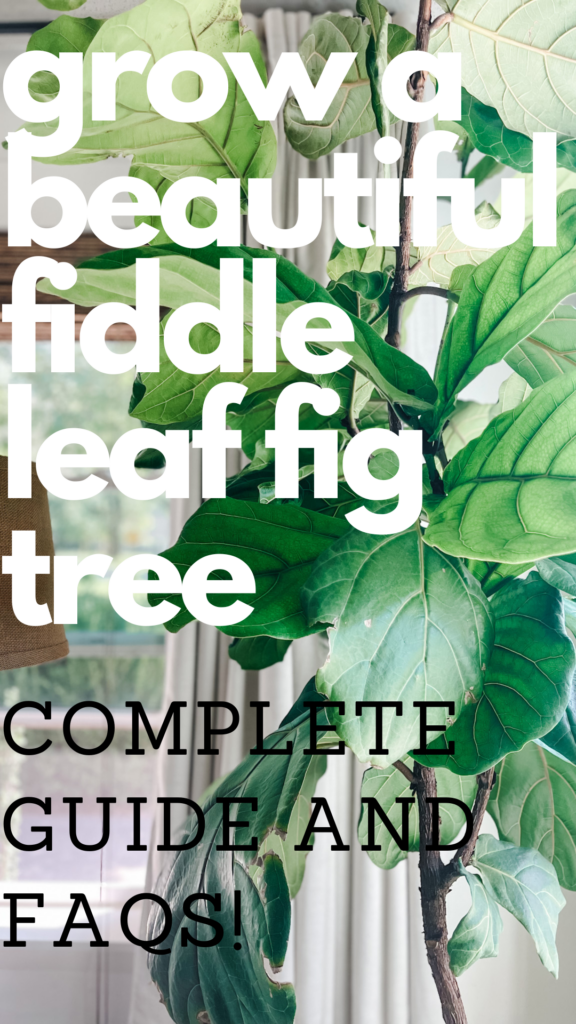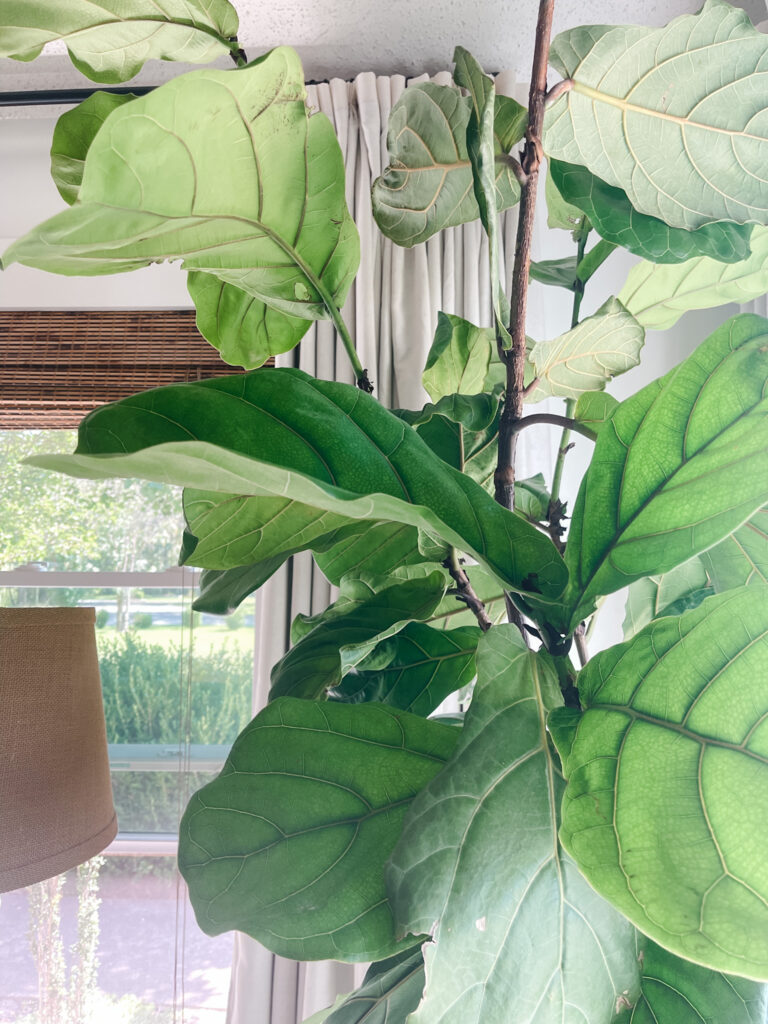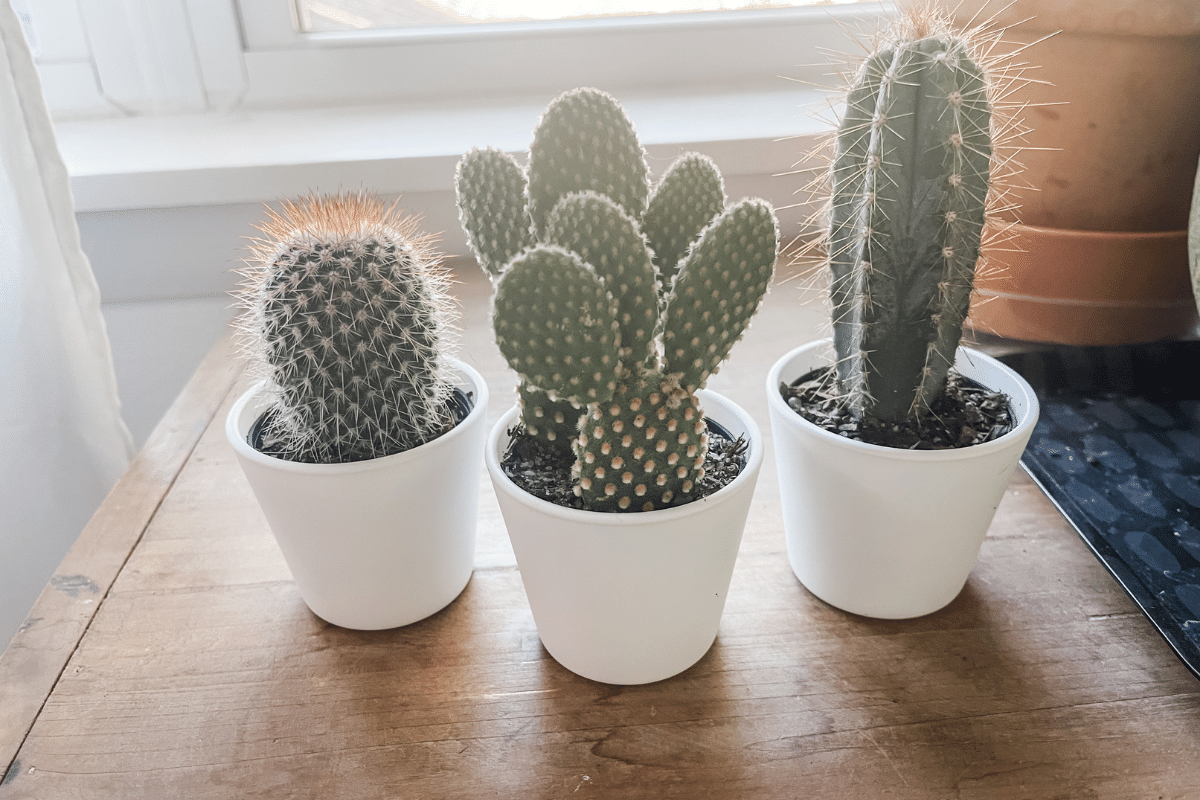How to Grow a Fiddle Leaf Fig Tree
Fiddle leaf fig trees (Ficus lyrata) have emerged as one of the most beloved indoor plants, adorning homes, offices, and interior spaces with their lush, glossy leaves. These iconic houseplants, native to Western Africa, have gained popularity for their aesthetic appeal and air-purifying qualities.

However, they can be a bit finicky when it comes to care. In this comprehensive guide, we will delve into everything you need to know about fiddle leaf fig tree care, from understanding what they are to answering frequently asked questions.
What is a Fiddle Leaf Fig Tree?
Ficus lyrata, commonly known as the fiddle leaf fig or fiddle leaf fig tree, is a species of flowering plant in the mulberry and fig family (Moraceae). It is native to the rainforests of West Africa, including countries like Nigeria, Cameroon, and Sierra Leone.
In its natural habitat, these trees can reach towering heights of up to 40 feet (12 meters), but when grown as indoor houseplants, they typically stay much smaller, making them suitable for various living spaces.

The name “fiddle leaf fig” is derived from the plant’s large, violin or fiddle-shaped leaves that can grow up to 18 inches (45 cm) in length. These leaves are deep green and glossy, giving the plant an elegant and luxurious appearance.
Due to their striking aesthetics, fiddle leaf figs have become a popular choice for interior decoration.
Where to Buy a Fiddle Leaf Fig Tree
Before we dive into caring for your fiddle leaf fig, you need to acquire one. You have several options when it comes to obtaining a fiddle leaf fig tree:
1. Local Nurseries and Garden Centers:
Visit your local nursery or garden center, where you can physically inspect the plants. This allows you to choose a specimen that suits your preferences in terms of size and overall health. Nursery staff can often provide valuable advice on care.
2. Online Plant Retailers:
Many online plant retailers offer fiddle leaf figs for purchase. This option provides a wide variety of choices, and you can usually read reviews and see pictures of the exact plant you’re buying.
3. Local Plant Enthusiast Groups:
Check out local plant enthusiast groups on social media or gardening forums. Often, fellow enthusiasts propagate and sell plants within these communities. You might find healthy fiddle leaf figs at reasonable prices through these channels.
4. Big-Box Stores:
Some large retail stores, such as home improvement centers, offer fiddle leaf figs. While they are often more affordable, the quality of the plants can vary, so be sure to inspect them closely before purchasing.
I purchased mine at Walmart when it was only about 12 inches tall. It has grown like a weed ever since!
Once you have your fiddle leaf fig, it’s time to dive into the essential care guidelines to ensure it thrives in your indoor environment.
How to Care for Fiddle Leaf Fig Trees Indoors
Fiddle leaf figs, though stunning, are notorious for being somewhat demanding when it comes to care. However, with the right knowledge and consistent attention, you can keep your fiddle leaf fig healthy and vibrant.
I have found them to be a very easy care plant with a little experience. Mine spends some of the summer outside as well.
To learn my 7 steps to bring plants back indoors after the summer, check out this post.

1. Light Requirements:
One of the most critical factors for fiddle leaf fig care is providing the right amount of light. These plants are native to the tropical rainforests of West Africa and thrive in bright, indirect light. Here’s how to achieve this:
- Placement: Place your fiddle leaf fig near a bright window where it receives plenty of indirect sunlight. Avoid direct exposure to harsh, intense sunlight, which can scorch the leaves. I’ve kept mine in a South or West facing window.
- Rotate the Plant: To ensure even growth, rotate your fiddle leaf fig every few months so that all sides of the plant receive adequate light.
- Supplemental Lighting: If natural light is limited in your space, consider using grow lights. LED grow lights designed for indoor plants can help compensate for insufficient sunlight.
2. Temperature and Humidity:
Maintaining the right temperature and humidity levels is crucial for your fiddle leaf fig’s well-being:
- Temperature: Fiddle leaf figs thrive in temperatures between 65-75°F (18-24°C). They are sensitive to drafts, so avoid placing them near vents, doors, or windows during cold winter months.
- Humidity: These plants prefer higher humidity levels. You can increase humidity by misting the leaves regularly or placing a tray filled with water and pebbles near the plant. Alternatively, you can use a humidifier to maintain consistent humidity levels.

3. Watering:
Overwatering is one of the most common mistakes when caring for fiddle leaf figs. Follow these watering guidelines:
- Allow Soil to Dry: Let the top 1-2 inches (2.5-5 cm) of the soil dry out before watering. Stick your finger into the soil to check for moisture. When it’s dry, it’s time to water.
- Use the Right Pot and Soil: Ensure your pot has drainage holes, and use a well-draining potting mix. Excess water can lead to root rot.
- Water Thoroughly: When you water, water thoroughly until you see excess water draining from the bottom of the pot. Empty the saucer underneath to prevent the plant from sitting in standing water.
- Establish a Routine: Create a consistent watering schedule based on your environmental conditions. This may vary seasonally.
4. Fertilizing:
Fiddle leaf figs benefit from regular feeding during the growing season (spring and summer). Use a balanced liquid fertilizer specifically formulated for houseplants. Follow the manufacturer’s recommendations for dosage, usually every 4-6 weeks.
5. Pruning and Maintenance:
Regular maintenance keeps your fiddle leaf fig looking its best:
- Pruning: Trim any yellowing or damaged leaves to encourage new growth and maintain the plant’s appearance.
- Cleaning: Dust the leaves regularly to keep them clean and allow them to photosynthesize efficiently. You can gently wipe the leaves with a damp cloth or shower the plant in lukewarm water (let it dry thoroughly before returning it to its spot).
- Repotting: As your fiddle leaf fig grows, you may need to repot it every 2-3 years or when it becomes root-bound. Choose a slightly larger pot when repotting.
6. Common Issues and Troubleshooting:
Despite your best efforts, issues can still arise with your fiddle leaf fig. Here are some common problems and how to address them:
- Brown Spots or Edges on Leaves: This can be a sign of underwatering or inconsistent watering. Adjust your watering routine, ensuring you keep the soil consistently moist but not soggy.
- Yellowing Leaves: Yellow leaves may indicate overwatering, too much sunlight, or poor drainage. Review your care routine and make necessary adjustments.
- Drooping Leaves: If your fiddle leaf fig’s leaves are drooping, it may be thirsty. Give it a thorough watering and ensure the pot has proper drainage.
- Pests: Keep an eye out for common indoor plant pests like mealybugs and spider mites. If you notice any, treat your plant promptly with insecticidal soap or neem oil.

Frequently Asked Questions (FAQs) About Fiddle Leaf Fig Care
1. Can I grow a fiddle leaf fig from a cutting?
Yes, you can propagate a fiddle leaf fig from a cutting. Use a healthy stem cutting with at least one leaf and root it in water or directly in a pot with well-draining soil. Propagation is a great way to share your plant or create new ones.
2. Why are the leaves of my fiddle leaf fig dropping?
Leaf drop can occur for various reasons, including overwatering, underwatering, exposure to cold drafts, or sudden changes in lighting conditions. Assess your care routine and make adjustments accordingly.
3. How do I encourage my fiddle leaf fig to grow taller?
To encourage vertical growth, provide your fiddle leaf fig with bright, indirect light, regular fertilization during the growing season, and occasional pruning to shape the plant and remove leggy growth.
4. Can I place my fiddle leaf fig outdoors during the summer?
Yes, you can move your fiddle leaf fig outdoors during the warmer months, but be cautious. Gradually acclimate it to the outdoor conditions, ensuring it receives filtered sunlight to prevent leaf burn. Bring it back indoors before the temperature drops below its preferred range.
5. Should I use a humidity tray for my fiddle leaf fig?
Using a humidity tray filled with water and pebbles can help increase humidity around your fiddle leaf fig. This can be particularly beneficial in dry indoor environments, especially during the winter months when indoor heating systems can reduce humidity levels.
Conclusion
Caring for a fiddle leaf fig tree can be a rewarding experience for plant enthusiasts, but it does require attention to detail and a commitment to providing the right conditions.
From selecting the perfect plant to mastering light, water, and maintenance, you now have the knowledge needed to help your fiddle leaf fig thrive and flourish as a beautiful and elegant addition to your indoor space.
With patience and care, you can enjoy the lush, vibrant foliage of this iconic houseplant for years to come. Happy fiddle leaf fig gardening!


